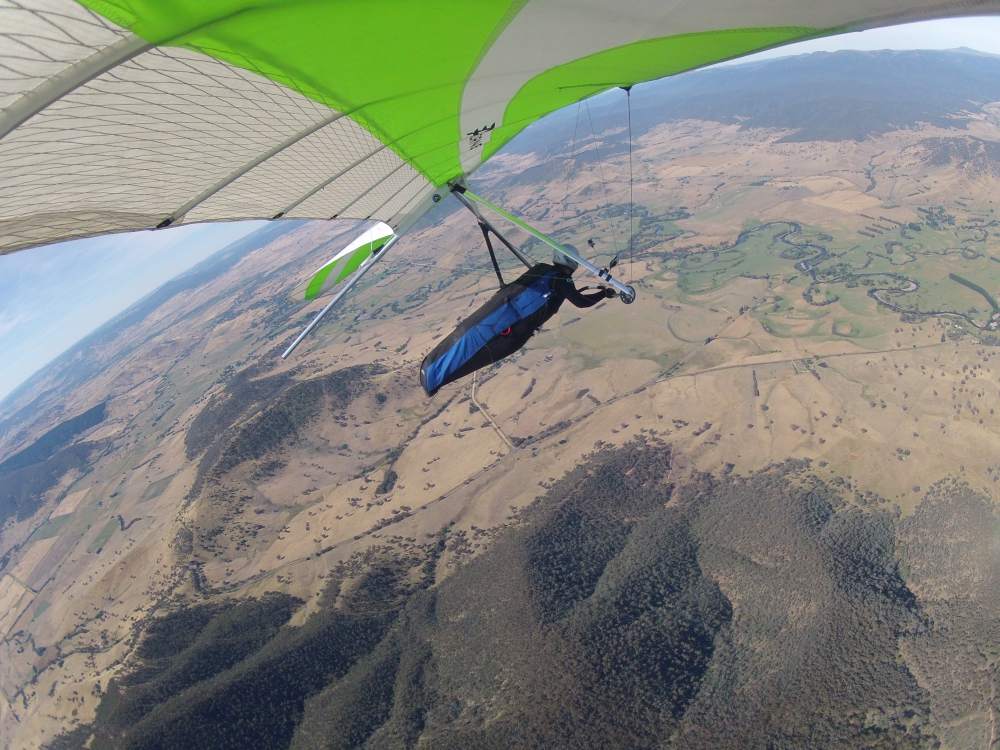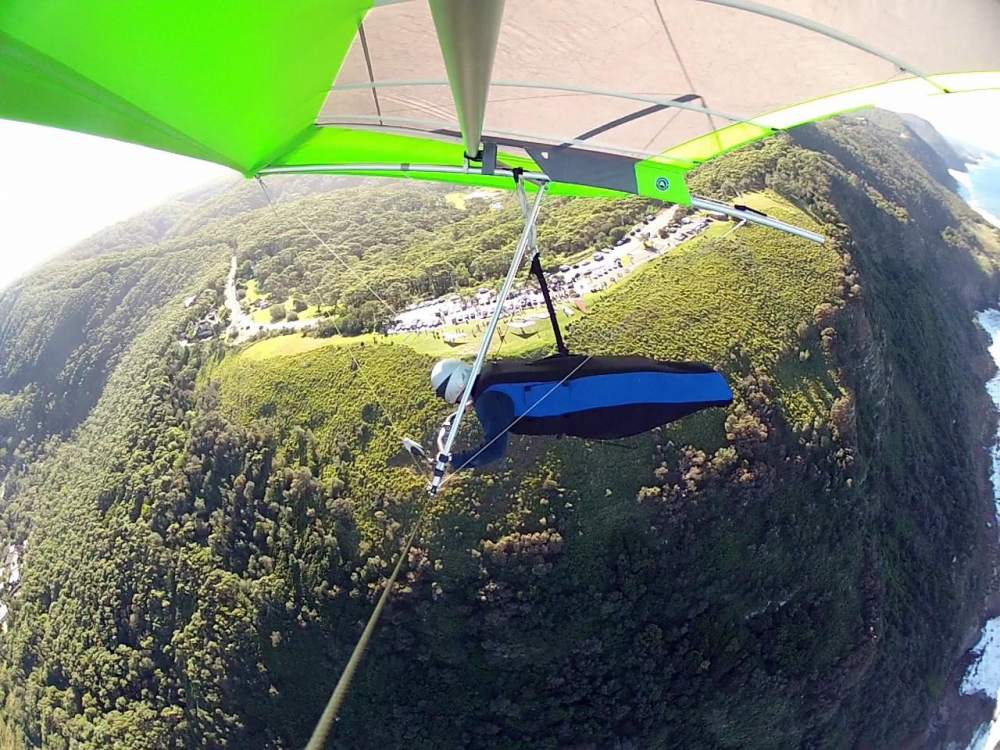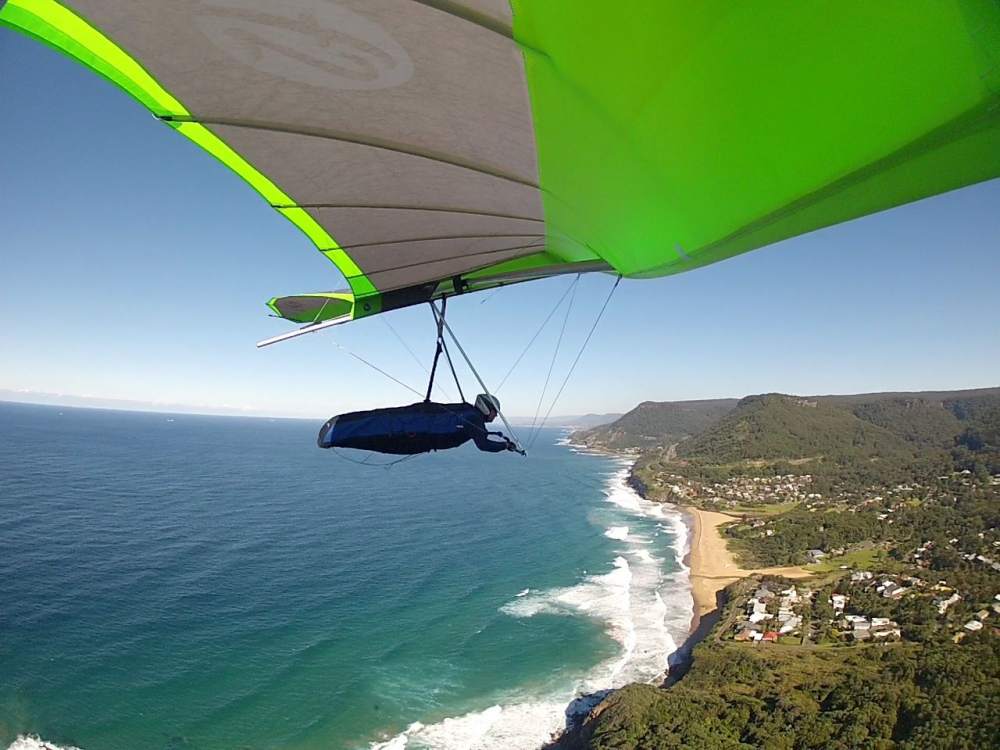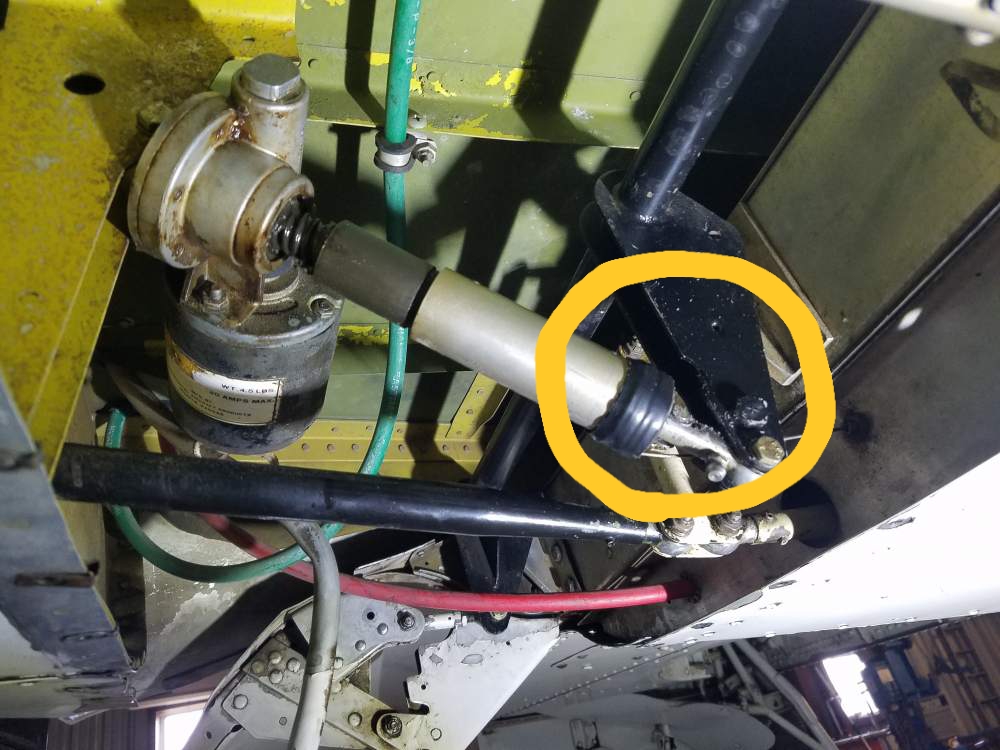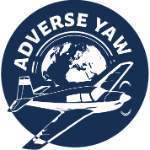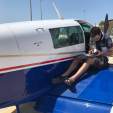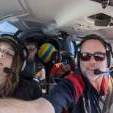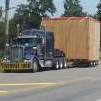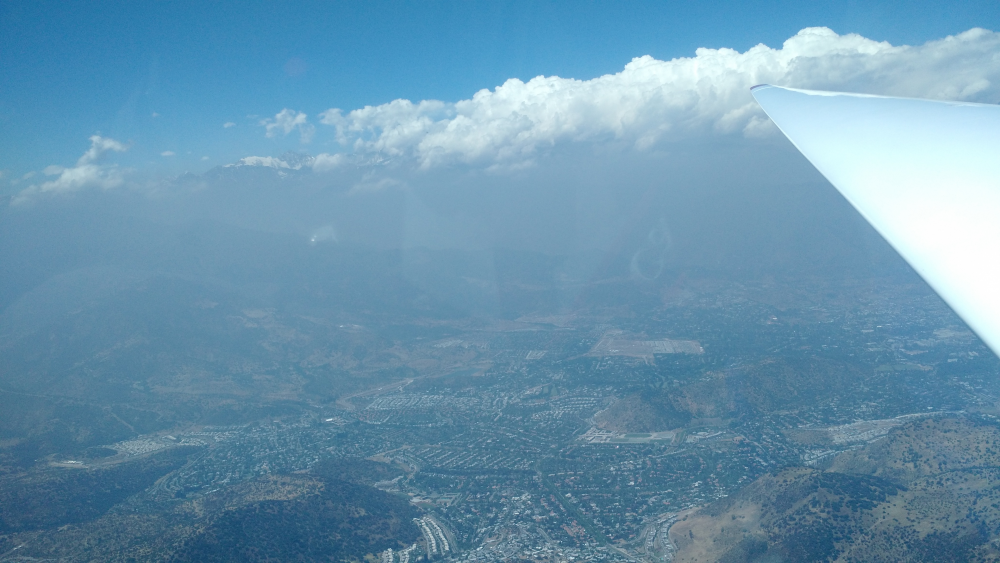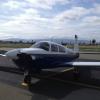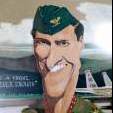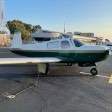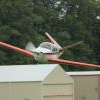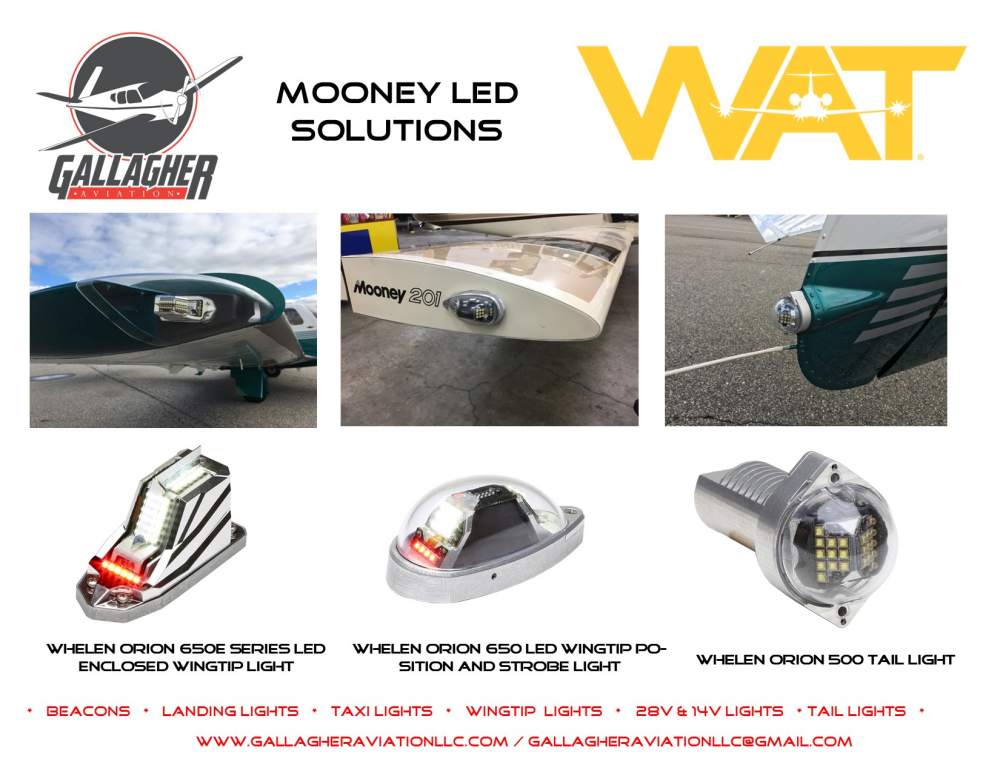Leaderboard
Popular Content
Showing content with the highest reputation on 03/09/2021 in all areas
-
6 points
-
Be thankful. The woman who was the Chief Pilot at the flight school where I got my PPL quite awhile ago had that happen in the air, in the winter. She was checking out another instructor, they were conducting engine out operations in a rural area west of the Minneapolis metro, and the throttle stuck at low power. She had to make an offield in a farmers field, then walk for help. No damage to anyone or anything, but not a good situation. If it was going to happen, be glad it happened while you were on the ground, in fact, be ecstatic. PS - the aircraft was a J. It is still flying.5 points
-
dont know much about AoA's but i'm betting if you dont get the gear down your johnson-bar will be badly damaged4 points
-
Resurrecting an old thread but I had my first icing encounter Saturday flying to KLHW. I was at 110 clear sky from KMSY to about 150nm from LHW OAT was 26F. I saw the clouds coming and knew at 090 and below it was clear. Continued on and saw a small amount of ice begin building on the leading edge. I asked ATC for 070 and as I passed 085 ice began to melt off. It was good experience knowing I had a good out.4 points
-
4 points
-
On a simple 4-cylinder engine, the Mooney squeezes out quite a bang for the buck. The following compares the 201 model comfort, load, performance, efficiency and safety to other aircraft. Enjoy! Comfort One common misconception is that the Mooney ain’t the most roomy plane around. People have said that the cabin feels cramped. Despite that claim, the Mooney is still bigger than most four-seater planes. Check this out: Aircraft Cabin Width Cabin Height Mooney 201 43.5″ 44.5″ Beechcraft V35 Bonanza 42.0″ 50.0″ Cessna 182 42.0″ 48.0″ Piper Arrow 41.0″ 45.0″ As you can see, the Mooney has the widest cabin among all of these aircraft. But, it also happens to have the shortest cabin height, which is probably why it has the reputation for being somewhat cramped inside. Nevertheless, it’s a reputation that’s hardly deserved. Utility Let’s take a look at the load-hauling capabilities of various airplanes: Aircraft Useful Load Payload w/Full Fuel Beechcraft V35 Bonanza 1270 lbs 826 lbs Mooney 201 1100 lbs 716 lbs Cessna 182 1219 lbs 691 lbs Piper Arrow 960 lbs 572 lbs Ok, the Mooney is obviously not as good of a load hauler as a Bonanza, but you have to look more closely to see that it actually is…the funny thing about the Bonanza is that if you take off with full fuel and four passengers, as you burn off fuel the center of gravity moves aft of the limit! The Bonanza has a very narrow CG range. So, unless your Bonanza is equipped for in-flight refueling, the Mooney ends up being able to haul a bigger load farther in the end. And when the tanks are topped off, the Mooney even beats the Cessna 182 in terms of the crap you can carry. Not too shabby for a “smaller” plane. Performance and Efficiency Since we’re talking about topping off tanks, let’s get down to the real heart of the Mooney’s superiority. Regardless of what the factory claims (169 knots), my 1977 Mooney 201 cruises at 160 KTAS at 8000′ at 70% power. This is while sipping a mere 10.5 gallons per hour of 100LL. Let’s take a look at performance figures for various aircraft (all figures represent 75% power, leaned to best economy, VFR reserve; the trip cost is calculated with a fuel price of $2.50 per gallon): Aircraft HP Climb Rate Usable Fuel Cruise Consumption Endurance Range Mi. per Gallon 500nm Trip Mooney 201 200 1030 fpm 64 gal 160 kts 10.5 gph 5:35 895 nm 15.2 $82 Piper Arrow 200 831 fpm 72 gal 137 kts 10.5 gph 6:20 870 nm 13.0 $96 Beechcraft V35 Bonanza 260 1150 fpm 74 gal 160 kts 14.0 gph 4:45 765 nm 11.4 $109 Cessna 182 230 924 fpm 88 gal 140 kts 13.5 gph 6:00 842 nm 10.4 $121 As you can see, the Mooney flies circles around its competition in the performance and efficiency category. The Mooney literally covers more distance in less time using less fuel! Why is this so? How does a Mooney manage to squeeze out that kind of performance from just a 200 hp four-banger? It all comes down to design. The Mooney is one of the cleanest planes out there (pre-composite era, of course). The 201 cowl and aerodynamic cleanup was a major accomplishment on the part of Roy LoPresti and Mooney. Here’s a great comparison of various lightplanes and their respective dragginess: Parasite Drag Coefficients & Flat Plat Area Aircraft CDP Flat Plate Area (sq. ft.) Mooney 201 0.017 2.81 Beech Bonanza 0.019 3.47 Piper Arrow 0.027 4.64 Cessna 182 0.031 5.27 Beech Sierra 0.034 5.02 Piper Warrior 0.034 5.83 Cessna 172 0.036 6.25 Cessna 152 0.038 6.14 Beech Skipper 0.049 6.36 Piper Tomahawk 0.054 6.64 Handling The Mooney’s handling is, in a word, impeccable. With control rods all around, the plane responds immediately to the slightest input from the pilot. Yet when you trim the plane up, it flies completely hands-off! You really don’t even need an autopilot (although it’s irreplaceable for IFR flight). Also, despite what people say, Mooneys are not hard to land, and they’re not difficult to slow down. As long as you stay ahead of the aircraft and plan your descents and power changes, it’s trivial. Speed brakes definitely aid pilots in getting Mooneys down more quickly without having to chop power (although there’s still quite a bit of debate over whether or not shock cooling is really a factor) or pick up excessive speed (although the yellow arc and redline in my 201 are very liberal), but I don’t have speed brakes and I don’t feel like I need them. Still, I’m sure any Mooney pilot will tell you that the Mooney really separates the good from the bad, in terms of the pilot at the controls. Safety When you address the issue of safety, the Mooney 201 is one of the safest planes in the sky according to the statistics. The Mooney’s steel tube rollbar cabin frame provides exceptional structural integrity. I have read countless articles and have seen photos that provide evidence of this. People have walked away from crashes in Mooneys where the cabin remained intact, saving their lives. In most other aircraft it would not have ended that way… Also, I’ve heard people talking about the Lancair’s strength, and how the test rig broke before the wing spars did. Yeah, yeah, whatever. Little known fact: the same thing happened at Mooney. Mooney factory engineers broke a static test fixture at 9.3 Gs while trying a destructive test on the J model wing. Anyway, you’re not going to break a Mooney! So there you have it. That’s just a handful of the reasons why I love owning a Mooney. Sure, there are quirks, like with any other aircraft, but at this point in my life (until I can afford a TBM-700, Meridian, or Pilatus) the Mooney is perfect for me.3 points
-
3 points
-
3 points
-
I probably should be tracking this better, but the trend is early 1990s to mid 2000s There seemed to be a change of metallurgy. don't think Lycoming would ever fess up to it.3 points
-
Hi Jamesm, I tried vents or louvers in both of the cheek cowls along with just in front of the nose gear in the center of the bottom cowling with little effect. Seems most of the air wants to be pulled out by the cowl flaps as Mooney designed it to. David3 points
-
In glider circles I’m known as “Daniel’s Brother” if that means anything to you. Otherwise I’m just commercial glider with around 200 hours.3 points
-
All my money goes to avgas and aerotows. Thankfully down here in the southwest the lapse rate gets to be so crazy that hanging on to thermals is child's play. Regularly max out the vario at over 10 knots of lift in the afternoons!3 points
-
Unlike 252, there is no way @gsxrpilot can fit an oxygen bottle in that "flying bag" and hit FL250 I fly an Astir when it’s too bumpy to fly the family, mostly local flying or expeditions to mountains in mainland Europe but not much banging on XC competitions these days, it's hard to imagine that someone flew the same toy up to 50000ft, so it still a long way before I get bored with it ! The most efficient form of flying, but unlike Mooney flying, gliding is the best way to waste a whole weekned, get it wrong on a 2h XC day and you will need to add 8h of driving & de/rigging before getting back home3 points
-
Hey guys, I thought I would upload this simple hack. Most portable/handheld Garmin units come with a yoke mount. Mine sat on the shelf until now. This aluminum yoke mount can be used as a oil filter cutter. All you need is the little cutting wheel and this one dollar packet of hardware from Lowe’s. It works just as well as the $100 cutters out there.2 points
-
2 points
-
You’ll probably need a need new throttle control cable/assembly. McFarlane just replaced our M20C last week. It’s pretty straight forward. The only tricky part for a M20C was a cut out for the gear warning / MP switch. That made it a custom order...not sure about on an Ovation.2 points
-
It is the purest form of flying out there. It's the most unbelievable feeling to be climbing out and sharing the same thermal with an eagle. You look over and it looks back at you and there is a sense of shared understanding of flight and how this all works. Lookout Mountain Georgia just outside Chattanooga is one of the best places in the US to learn to fly. But the most consistent flying is in Florida. Of course it's tow launch behind and ultralight, not foot launch off a hill. But if you're going to do it right... go to Sydney Australia and fly at Stanwell Tops. The scenery is to die for, the winds are smooth and consistent, and you can stay up all day cruising up and down the coast looking out over the Pacific.2 points
-
Yup that was it and you likely landed a few minutes ahead of me. Two airplanes got in after us. That was it for over 24 hours. As for getting through the patch, if you taxied in the right spot, you missed a rut and should have been fine. After being directed back in I should have still tried for an edge not the smack dead center. Also, I have the heavier nose and 75 inch prop. I don't think a 74 inch prop would have made a difference with the rut I ended up going through (dropping into) but I bet if I attempted to taxi more to the edge of the patch I may have gotten through unscathed. I'm thrilled to learn your Mooney was safe. Next time, if you see something that looks like that, don't go through it!!!! -Seth2 points
-
2 points
-
2 points
-
Ran across this and thought I'd chime in. Thanks John G. for the nice words. I was part of the original Mod Works before Mooney Mart came to be. Coy, Tim Coons and Kevin Surrell were all there with me. We shared many great times that will always stay with me. Kevin is gone and Coy is gone. I still have the photo of the day Joan flew in at sun-n-fun. I won't share the secrets I know of them but that was his soon to be new wife. I helped Coy get started with Mooney Mart and helped move him in that hangar. Even that was a battle with some people. I have stories that would get us both in trouble back then, but I will take those stories to my grave. Coy and I were in touch a few times prior to his passing. I can say, he never changed his way of thinking. I still talk to his daughter. He is missed and loved! Peace!2 points
-
I’m actually a legit CFI-G... but I haven’t flown a glider in 25 years. I miss it. Have a 5.0 hour flight in wave too (ASK-21). Ran out of O2 at 3 hours, dropped down and had just enough thermals to hang around 2 more hours. Mostly in 2-33s and some 1-26 time. The 1-26s are awesome spinners!2 points
-
I'm one of those people sitting on the side lines waiting to see what happens. I have a '68 M 20 C with an Aspen 1000 pro and 2 Garmin 430's. I would like to install Dynon 2 10" screens (like pilot 101 has) I also have more money in the plane than it's worth the plus side is I know everything that's done on the plane. It's my hobby and plane for life. I'm sure there are crazy people out there just like me putting more money into the plane than it's worth. When the auto pilot comes out many more Mooney drivers will pony up the money for this just like me.2 points
-
Well, not actually. The low cams in Continentals have the same corrosion and spalling issues. And, add to that the cylinders have weak valves because the rocker arm is lubricated from below, rather than the top. Meaning the valve stems and guides do not benefit from oil flowing down over them like a Lycoming. This is most likely the reason that Continental cylinders last half as long as Lycomings. The lack of lubrication wears out the exhaust valve rotocoils quicker, and the lack of heat transfer wears out the valve guides quicker.2 points
-
Inviting @201er to discuss gliding... Erik and JL have informal distance records for gliding in M20Ks.... I think we have an MSer from Minden Nevada with a glider for his avatar... MS has several glider pilots including really long distance gliding... If I got any of this right... I win a memory award... Best regards, -a-2 points
-
I have about 1,500 hours in gliders and used to fly a lot of competitions. Unfortunately I haven't had the chance to do a lot of glider flighting in the last 20 years and I really miss it. Currently I am seriously considering trading the Mooney for a RF10, Taifun 17E, or Grob 109B. Anybody interested? The picture was one of my most memorable flights during a 2017 vacatio n in Chile. The mountain in the background is Aconcagua, with 22,837ft the highest mountain in the Americas.2 points
-
Is that you? You just won the cool contest! I mean you’re a 252 owner, so already cool. Soon to be an Encore, even cooler! But hang gliding a 10000 feet? You win. I resign.2 points
-
When I bought my K I asked here on MS if full tanks, 75 gal, was to the bottom of the filler neck or as much fuel as one could could stuff in while being patient. I didn't get any real good answers. The POH does not say. Logic would say 75 gallons is to the bottom of the filler neck since it gets pretty tedious to fill past that. But when my JPI + CIES was installed and the shop calibrated the system it turned out that 75 gallons is as much as you can stuff in. It is about 5 gallons total, or 2.5 gallons per side, between the bottom of the filler neck and totally full. A couple years ago I was in North Las Vegas. I asked the line guys to fill the plane as full as possible. We were there for a week. As departure day got closer, I find that I should expect 45 Kt headwinds all the way back to KRHV. So I wanted the plane really full. Call the FBO and find out how much fuel was loaded, and it was short. So I went out and supervised the truck put an additional 12 gallons in a supposedly full pair of tanks. Only maybe 1 in 10 times will an un-supervised line guy be patient enough to really top off the airplane. I've had to call for a top-off a few times when I really needed every last gallon. Larry2 points
-
It's really not that much. I mean, I'm at 15,000 10 min after brake release which is 1/6 of an hour..so at most 6 gallons to climb. Then I'm doing 198 KTAS around 18.5 gph...which is a lot, I grant you...but God is it glorious. And that's 65% power: loafing, not even pushing the engine at all. It's what Disney long ago called an "E-ticket ride"2 points
-
This assumes your PC system is working. It seems that you only have one CDI (Nav 1). The Accutrak receives input from your CDI in most (all?) cases. If you had a second CDI that would be Nav 2. Go fly. Center the CDI on a GPS track or VOR radial to some distant point. Switch it on (TRAK=ON). It should keep you on course. I find setting SENS to LO is sufficient. No altitude hold function so you'll need to do that. Hope it works! If so, its awesome. If not, troubleshooting expertise on those abounds on MS. Fred1 point
-
Isn't Oasis Aero in the vicinity, if not at FCM? He's a Mooney Service Center now, as well as Tank Resealing Expert.1 point
-
In these posts we should spell "Aerocruze" correctly so we can find the posts with the Search function. https://www.bendixking.com/en/products/ai/autopilots-and-indicators/aerocruze-2301 point
-
That is super helpful, OSU! That makes it hard to forget which lights I want to order for my Mooney... Thanks, -a-1 point
-
If David and I can it going, I sure will.1 point
-
Rides for hire. I had the pleasure of giving first flights to many passengers in SGS 2-33 and 2-32.1 point
-
In the sense that Garmin has something to sell and Dynon does not, I guess this is correct? $7195 is indeed higher than $0.1 point
-
I should add the @carusoam caveat that I am not an AME / A&P or avionics technician, so take my comments as worthless until confirmed by one of those. There are several really good ones on this forum so expect to hear from one soon. The Carusoam Caveat. Did I just coin a new phrase?1 point
-
If you have a flat wingtip type Mooney then the Orion 650 is the direct replacement for your Whelen legacy A650 light. Your strobe power packs get removed as part of the installation and for your tail light you can do an Orion 500 with an LED position and strobe light or opt for a straight LED position light. gallagheraviationllc@gmail.com <--- Email me your questions 1-833-425-5288 <---- Call me with your questions https://www.gallagheraviationllc.com/whelen-aircraft-lighting.html <--- My website1 point
-
Don’t have to, you can pull the barrel lifters, Lycoming mushroom lifters you can’t.1 point
-
The title of this thread is "What to do with an idle airplane" The correct answer is to find a way for it to fly and not be idle. The cost of letting an airplane sit is real. If I as an owner can't fly for one reason or another, it's then to my benefit to find a pilot who WILL fly the airplane. There are lots of ways to do this. An obvious one is to bring on a partner. It can even be a non-equity partner. If I knew I wasn't going to fly the plane for the next few years, it would probably be best to sell the plane on the front end of those years. But often it just sneaks up on us and the next thing we know is that it's been a few years. So don't sell it, but bring someone in who can fly it. There are lots of young but capable pilots out there needing to build time. Find a CFI who's trying to get to 1500 hours and the ATP. Even if you put them on the insurance and let them fly for a lower dry rate, you'll be money ahead when you decide it's time to sell.1 point
-
Another option for you would be to use the speed and fuel sliders to bump up the 231 performance if yours is faster. I do this for my TN, reducing speed by 5% (TKS and imperfect rigging) and am usually within less than a gallon or .1 flight time. -dan1 point
-
All of this is true, but remember that the originals are likely 40-50 years old. I've repaired mine also and they looked good....for a couple years. Then the 50 year old plastic started doing what 50 year old plastic does. Eventually it's like trying to glue potato chips back together. The plane plastics panels do require trimming, but it's not rocket science and...to me...worth the effort. I'm actually in the middle of replacing the wall panel right now. Will be trimming it today.1 point
-
Allow me to disagree with you on this point. there are many countries in africa where the distances far exceed the autonomy of our planes. For example if you want to fly to lokichogio (HKLK) from nairobi (HKNW) and back, you have to send barrels of fuel to loki a few days before you fly there! I can cite many more similar or worse examples in other african countries. This point is however irrelevant to the subjet which is how to get long range tanks whatever the purpose of the need is.1 point
-
Brad- Do it! The Commercial is the most fun of the checkrides. During my oral for the commercial I stated that I look at every checkride as a learning experience and hope that I'm able to communicate a proficiency level on the required material so that we can continue with the practical test. Most examiners do not have a lot of Mooney time. So do tell they if they want to demonstrate a lazy 8 or other maneuver they can. My examiner asked if he could show me what he was looking for in a lazy 8 and I asked him to demonstrate. It was THE WORST lazy 8 I'd ever seen in the Mooney Missile (heavy nose). He looked at me afterward and said "you really know your airplane" and then "let's go back to the field for some landings). -Seth1 point
-
Wow. That timing, with COVID. I had heard some stories but reading it in detail is crazy. I really hope this vaccine works as good as anticipated. I think pax numbers this week are almost back to 50% of last year, I think the industry is slowing reeling back. Are you able to say which airline hired you, and if you have any recourse for an easy return? Wishing you and your family all the best. Looking forward to the next post.1 point
-
One last real piece of Mooney advice... There is one last new Mooney for sale still at the factory... It just got released from development duties... announced this past week... Best regards, -a-1 point
-
No you didn't do a bad job of explaining it. Pretty much everything you say is true. What I have found, though, is that the FAA really does not want to go chasing after pilots and making up charges. Charges and enforcement actions happen when there is a bad outcome of some kind, or a complaint about something a pilot did that was really stupid, like buzzing people or flying under bridges. Don't do stupid and the FAA won't come looking for you, in fact, if you get in trouble in the air their first thought will be to get you down safely, no other agenda. There are a bunch of Master MEL's that were published. They exist for Pipers, Cessnas, and Cirrus's but there is not a Mooney specific one, the factory was probably in sleep mode when the FAA was trying to get them done. There is a generic MMEL for single engine aircraft. It is very detailed and elaborate. If anyone really wants to try, you can just google Master Minimum Equipment List, look it up, and the take it to your FSDO and confer with them so you have authorization to use it. Let's not all of us rush to the FSDO at one time though.1 point
-
Notice that I did not say that experience isn't important. Actually what works the best is having a pilot to mentor with. I do that for dozens of pilots from a weather perspective. Scaring the hell out of yourself is a BAD approach to learning. In fact, it teaches you nothing. When I hear "older" pilots say things to "younger" pilots such as, "just get out there and fly in some real weather and you will figure it out" is when I turn away and shake my head. It has and will always be a recipe for disaster. In my 40+ years, I have heard it all and have talked to thousands of pilots about weather over the last two decades. And the common thread is not the lack of experience, but it is the lack of knowledge and training. 99% of pilots are not trained properly when it comes to weather...so it doesn't matter how much experience you have, those experiences are not going to suddenly generate knowledge. So I am not disagreeing with you...but experience isn't the gold star to making good decisions...it's knowledge that leads you down the path to making the best decisions and reasonable judgement that turns into valuable experience. Why? Because every single weather system is different and to think otherwise is just an open manhole waiting for you to fall into. To think that previous successes in flight make better decisions on the next flight is just missing the point and is a dangerous mindset simply because risk is addictive. How do I know that? Because I am a student of weather and I have studied why pilots kill themselves in weather-related accidents and it's due to a lack of knowledge...I worked 3.5 years on this topic to earn my PhD. Why does a 12,000+ hour ATP and flight instructor decide to depart in an airplane without a certified ice protection system with two other people on board and attempt to climb through a stratocumulus deck loaded with ice? Did his experience protect him? No. Did his lack of knowledge defeat him? YES! See Cirrus Birmingham icing accident. And from a knowledge perspective, I'm not talking about rote memory and naming cloud types. That's not the knowledge I am speaking of. It's understanding why SHRA, VCSH and TSRA are all a form of convection. It's understanding why icing is still very likely in clouds producing snow. It's understanding that lenticular clouds are more often a sign of smooth air than not. It's knowing why a forecast for non-convective LLWS isn't a forecast for turbulence. These are the things that will allow you not to need to do a CAT III approach. These are the tools that will minimize your exposure to dangerous turbulence or airframe icing, not test the waters to gain experience dealing with them. No amount of experience is going to teach you how to do that. I don't need to have touched a hot stove to know that it will burn me. A seasoned or tempered pilot should get there through a concerted effort of education and training. So I'll stick with the NTSB's safety study which was very thorough. You don't gain knowledge simply because there are more hours in the logbook. Knowledge is needed. Education is the key to a long flying career. You read, take courses, go to seminars, and you get training from an expert. Then you apply that knowledge during your preflight planning and while in flight. That's the experience that will keep you in the game for a long, long time. That's the foundation that works, not the other way around. Experience without critical knowledge only breeds risk. Bank on it - the accident statistics scream it. And when you are ready, send me your address and I'll send you my new book on weather for you to mull over in your spare time...the knowledge contained within will make you a better pilot, guaranteed or your money back! To anyone reading this, experience is not the answer! It's knowledge and training that is backed up by experience - that is the valuable asset.1 point
-
I wonder how much pressure builds in the tank on a hot day with the vent covered? SB M20-229A (fuel cap AD) says no more than 1/2 psi to test for leakage. Skip1 point




